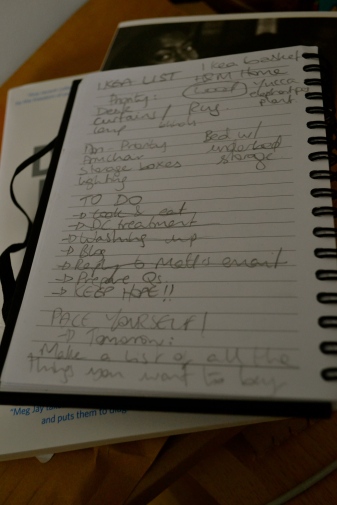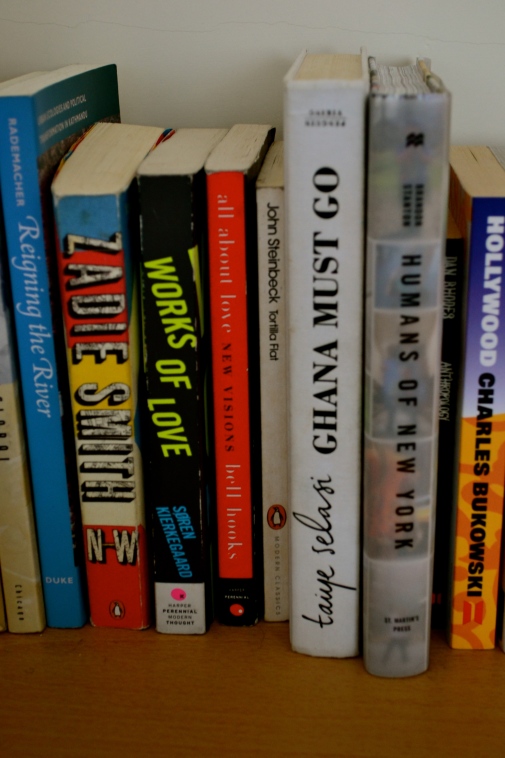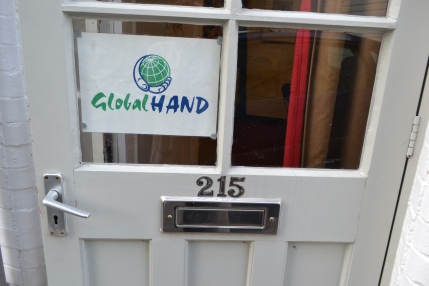 The first time I came across Global Hand was around a year ago, when my friend, Becky, enlisted my help to volunteer in one of the simulations they often run to raise awareness around issues of poverty and a lack of sufficient dynamism around the subject. Having volunteered with them again this past summer and getting to better understand the work that the organisation is involved with, I realised that the work that Global Hand does carries more complexity than its mission as ‘the partnership people’ humbly states.
The first time I came across Global Hand was around a year ago, when my friend, Becky, enlisted my help to volunteer in one of the simulations they often run to raise awareness around issues of poverty and a lack of sufficient dynamism around the subject. Having volunteered with them again this past summer and getting to better understand the work that the organisation is involved with, I realised that the work that Global Hand does carries more complexity than its mission as ‘the partnership people’ humbly states.
Creating partnerships between businesses, charities and individuals is instrumental in trying to bridge the gap between two disconnected worlds. Within Global Hand’s remit, the charity actively calls upon the empathy of its partners to create change in their actions and become more dynamic in thinking about and helping to solve problems of poverty that can often be (directly or indirectly) linked to their actions. The work they do is impactful and educational: it sheds light on the issues of corporate responsibility and global economic inequality and helps economically powerful figures as well as young students, to face a world that their daily schedules and lifestyles might separate them from.
Having worked with CEOs and schoolchildren, the work they do spans the spectrum of influence. In the first part of the 4-part profile on the organisation, I met with three members of the team: Ben Solanky (UK Director of Global Hand UK), David Watson (office administrator), and Matthew Gurney (Chief Operating Officer) to talk about their vision for the charity, the people they have worked with, and their motivations for doing what they do.
| WHAT IS GLOBAL HAND’S VISION?
“PRIOR TO COLLABORATING COMES THE WILL TO ACTUALLY DO SO”
MATTHEW: The vision is to connect and bring people together. We live in a world of surplus and a world of need, and often, these two worlds do not connect, and so we want to find ways to do that – to bridge that gap – and bring people together. We want to form partnerships and utilise resources, skills and knowledge.
BEN: One thing we have seen increasingly is the desire for people to accumulate their knowledge and skills, and help where it is needed. Prior to collaborating comes the will to actually do so. Allowing others to have that empathy and see the world as it is seen by those living in poverty is enlightening and powerful in inspiring that collaboration, and so the simulations have inspired such collaborations.
TELL ME ABOUT YOUR INVOLVEMENT WITH GLOBAL HAND – HOW DID YOU GET STARTED WITH IT?
MATTHEW: For me it wasn’t planned to come into this organisation. It coincided with a time in my life in which I wanted to leave the sector I was working in,
which was a design and construction company, into an area that was close to my heart but that I hadn’t anticipated working in. That was it – a very unexciting way!
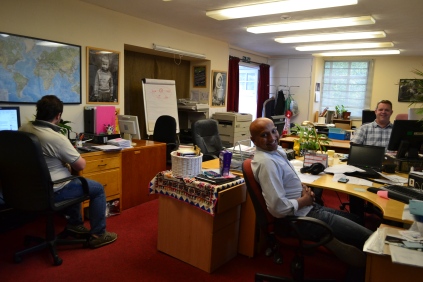 DAVID: For several months, I was going through a rough patch with work, not knowing what to do and so Global Hand appeared to me over that summer. And so, the ‘odd job’ went, and Global Hand came into being. It is something that changed my career massively and I’m learning everyday.
DAVID: For several months, I was going through a rough patch with work, not knowing what to do and so Global Hand appeared to me over that summer. And so, the ‘odd job’ went, and Global Hand came into being. It is something that changed my career massively and I’m learning everyday.
BEN: I should be a teacher, in my mind! I worked in the charity sector for a number of years but I didn’t have a lot of hope staying in it. I was trying to become a teacher at the time, however I was reintroduced back into the idea that the world is a place that is full of need, and that is why we charities exist. We cannot address these problems by ourselves – as individuals we are dwarfed by enormous needs such as poverty, suffering, and climate change. Ideas of collaboration and partnership are real assets and are powerful tools to address those needs. As I was trying to become a teacher, that desire…to be involved in charities came to me, and the attraction to it was the idea that we can all contribute and we can bring our knowledge, our contacts, our wisdom and our resources to a world in need. But, yeah, I was trying to be a teacher!
LINKED TO THE SIMULATIONS YOU TALKED ABOUT EARLIER, WHAT ACTIVITIES AND PARTNERSHIPS DO YOU OFFER AND WHAT THAT HAS LED TO?
BEN: One account of a partnership stems several years from the impact of a simulation we did in Davos in [in conjunction with] the UNHCR, at the World Economic Forum in 2010. The chairman of Nestlé turned up at the event and he was clearly moved by this journey into the life of a refugee and some of the reenactments of life within a camp. Upon coming out of this simulation, I was able to discuss with him how he might like to be involved with this in the future. Sometimes we don’t know or see what happens next, but this year we were back in touch in touch with this same chairman, and he happened to be sponsoring the same event in Davos this year, which was focused on galvanising support for Syria. At the end of one particular simulation, he gave a testimony explaining how he had attended the same event that we ran in 2010 and how it had changed his worldview. As the chairman of Nestlé, he is so removed from that world, but it changed his worldview in that when the Nestlé factory was blown up in Damascus last year, they wrestled with the question of: what SHOULD we do as a company? We have people and employees who depend on us – if we take them off the payroll, it would most likely make the refugee situation worse because of the lack of money and support. So he said that he decided to keep them on the payroll. What was also powerful is that, in sharing his testimony, he had tears in his eyes realising the agony of these big decisions, and other powerful figures became inspired to do likewise. So much of the power of these simulations lies in the peer-to-peer influence that is inspires, and that is a privilege, to see that degree of testimony. Often we don’t hear back, but that was one of our most touching testimonies.
MATT: We run these experiential programmes in order to allow participants to step into the shoes of those who are refugees, or living in desperate poverty, and allow those in the simulation to get a sense of feeling of what people in that position experience in their everyday lives. This element of empathy is critical – we want to touch people’s hearts so that they understand what these issues are. Eventually, with that understanding comes the desire to do something about it, and we have seen those results from the simulations we run.
DAVID: We often go to schools and community groups, so we do things on a smaller scale also. It’s quite inspiring to see effects on a smaller level.
WHO HAVE YOU WORKED WITH?
“THE PEOPLE THAT COME THROUGH THESE SIMULATIONS…WE’VE HAVE THE KING AND QUENN OF BELGIUM ATTEND, THE HEAD OF NESTLÉ, SHERYL SANDBERG.”
MATT: The list is very long! One of the main platforms we run these simulations on is at the Davos World Economic Forum (for the last 6 years). The people that come through these simulations… we’re constantly staggered by it because they’re heads of industry and world leaders. Earlier this year had the king and queen of Belgium attend, an astronaut, the heads of Nestlé and Unilever, Sheryl Sandberg – all sorts of people have done this, but it is not just the big names for us. Everybody that takes part is as significant as the other, and so we run the same programmes for schools, church groups, community groups and businesses. It’s been a journey and hopefully will continue to be.
WHAT HAS BEEN YOUR MOST INSPIRING MOMENT? AT THE SAME TIME, YOUR MOST CHALLENGING MOMENT?
DAVID: for me, it was when I went to Davos for two weeks a couple of years ago. From seeing the setup and the types of people coming through [at the start] compared to when they leave, it is incredible to see the way it changes peoples outlook. It’s a privilege to know that they took time out of their busy schedules to attend.
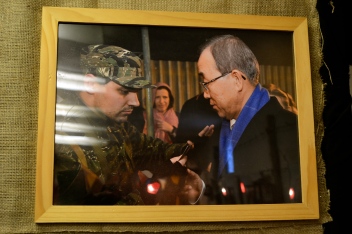 BEN: I’ve been privileged to see quite a lot over the years – from partnerships with the UN, to seeing a small organisation grow. A particular project I was close to was in Haiti, and seeing an earthquake survivor get to the Paralympic Games. Over my time here, I have worked with colleagues that don’t have to be here. Everyone is a volunteer, and that is a real honour and privilege to be working in a community like this. It is by no means easy, but it is an honour. Those are the things that make you proud – working with volunteers who are keen, committed and serving, it blows my mind. I do have to keep reminding myself of that because there are times when you have a lot to do, and there are a lot of resources you don’t have; working in this sector means you’re always yearning for more. But when you take stock and look around, it is pretty amazing to see what has been gifted and the lovely environment you have to work in that is this organisation.
BEN: I’ve been privileged to see quite a lot over the years – from partnerships with the UN, to seeing a small organisation grow. A particular project I was close to was in Haiti, and seeing an earthquake survivor get to the Paralympic Games. Over my time here, I have worked with colleagues that don’t have to be here. Everyone is a volunteer, and that is a real honour and privilege to be working in a community like this. It is by no means easy, but it is an honour. Those are the things that make you proud – working with volunteers who are keen, committed and serving, it blows my mind. I do have to keep reminding myself of that because there are times when you have a lot to do, and there are a lot of resources you don’t have; working in this sector means you’re always yearning for more. But when you take stock and look around, it is pretty amazing to see what has been gifted and the lovely environment you have to work in that is this organisation.
MATT: I would say the same as Ben: It always comes back to the people you work with, the people you are partnering with and people who are doing things that are sacrificial of themselves and with little reward – that is hugely inspirational. The most challenging aspect is, however, people – the limit that we have of them. The work that we do is limitless and we need more people to do it. In that sense, it can be a constant struggle to move forward, but we do!
WHAT DOES A TYPICAL DAY LOOK LIKE?
(laughs)
“THERE IS NO TYPICAL DAY…IT IS VERY FLUID, BUT THE COMMON THEME IS PEOPLE.”
BEN: There is a wealth of information we have to navigate through, so a lot of out day involves stewarding information between two groups and facilitating a level of communication between them. There is also a huge heap of event planning and meetings, networking and correspondence. What we’re trying to do is steward resources towards where there is a need. It can be a thankless task because as a middle man you can be pushed aside, but we have to keep encouraging each other and that’s a powerful part of working here.
MATT: There is no typical day. It can be here in the office, on the road, running a simulation in a school in Oxford, or travelling around Nicaragua, as our communications manager Dave Crisp is doing at the moment. So it is very fluid, but the common theme is people.|
To find out more about Global Hand, visit their website:http://www.globalhand.org/en
Thanks for reading 🙂 What did you think of this interview? Do you have any questions about Global Hand? Let’s discuss in the comments!

